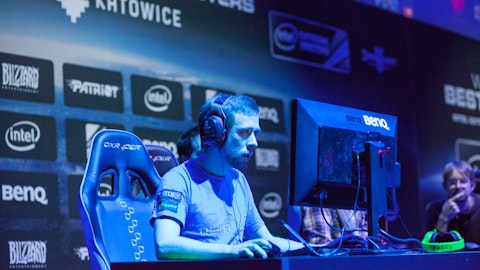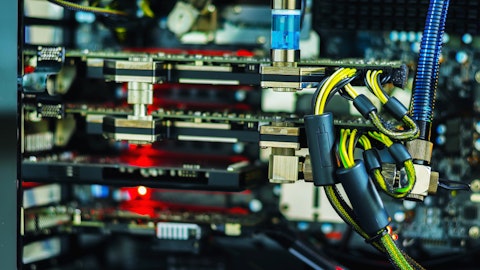If Advanced Micro Devices, Inc. (NASDAQ:AMD) manages to stick to timelines with Vega and Navi, it could actually give NVIDIA Corporation (NASDAQ:NVDA) a run for its money.
Advanced Micro Devices, Inc. (NASDAQ:AMD) shareholders have had a terrific past year. Market capitalization of their company has more than tripled over the past 9 months alone on the back of improving fundamentals (1) and operational competitiveness. But this isn’t the ceiling for AMD just yet; the company is still in the process of staging a turnaround of its lifetime. I’m of the opinion that apart from the promising CPU segment, AMD’s continued financial and operational improvements would also depend immensely on the timeliness of its Vega and Navi GPU launches. Let’s take a closer look.

spacedrone808/Shutterstock.com
AMD’s Vega Effect
AMD’s next-gen Vega GPU line-up has received so much attention and coverage lately that it hardly needs an introduction anymore. The chipmaker unveiled its latest GPU line-up at the CES 2017 event earlier this month, and preliminary benchmarks revealed that AMD’s new flagship outperformed Nvidia’s 6-month old flagship by 15-20% in terms of raw performance. AMD didn’t reveal any technical or pricing related details about the Vega line-up, perhaps to keep the folks over at Nvidia guessing until the last moment. The smaller chipmaker was expected to go out of business merely a year ago, and now it’s giving stiff competition to the industry’s best. So AMD has grown to become formidably positioned.
Now, one might argue that Advanced Micro Devices, Inc. (NASDAQ:AMD) is about 6 months late with its Vega line-up. After all, the latest flagship was competing with a 6-month old flagship from NVIDIA Corporation (NASDAQ:NVDA). And this is true. But would it hamper AMD’s market share gains for the remainder of 2017?
Well, as per preliminary reports, AMD’s Vega line-up is expected to hit the shelves during the first half of 2017 (2). This would suggest that its GPU line-up would be available for mass-retailing, latest by June 2017. It’s primary competitor, Nvidia, on the other hand, is expected to only unveil a Pascal refresh around the same time-frame (3). Since it’s just a refresh, there’s a high chance that its performance improvements over the original Pascal, unveiled last year, won’t exceed 15-20%. I don’t think these gains would be enough to completely obliterate AMD’s performance-oriented Vega flagships and make them irrelevant for buyers. After all, Vega was also showcased to be 15-20% faster than Nvidia’s original Pascal flagship released last year.
The reason I say this is because Nvidia has very little that it can do with the Pascal refresh. It can make minor tweaks to its existing architecture, such as adding a few hardware features, boost the transistor count a bit at a bigger die or maybe overclock it. But none of these changes are permanent and long-lasting in nature that would immediately serve as a death sentence for AMD’s Vega. Boosting transistor count or clock speeds negatively impacts power efficiency after all.
I suspect that the heightened competitiveness of Vega should provide the semiconductor stalwart a very good platform to gain some market share in the mid and upper GPU segments. But, I would like to emphasize on the fact that AMD would have to strictly adhere to its timeline, or otherwise Nvidia’s upcoming Volta GPUs (scheduled for 2017-end release) would absolutely destroy Vega’s performance advantage.
Follow Advanced Micro Devices Inc (NASDAQ:AMD)
Follow Advanced Micro Devices Inc (NASDAQ:AMD)




